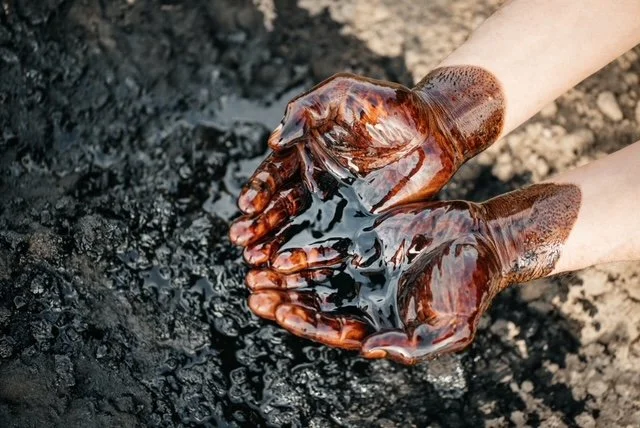Fashion's Plastic Problem: The Urgent Need for Real Change
By Jeanine Ballone
In the fashion industry, plastic has become an undeniable presence, permeating through clothing, accessories, and packaging with its convenience and cost-effectiveness. However, the true impact of this dependency is alarming, with ecological ravages and negative health implications. It is imperative for the fashion industry to confront its plastic quandary and embrace profound change. The recent bankruptcy of Renewcell serves as a stark reminder of the necessity for transformation in the sector.
Plastic, specifically polyester, has deeply embedded itself in fashion, accounting for a staggering 70 percent of garment production. This prevalence, driven by the material's fossil fuel basis, not only perpetuates pollution and resource exhaustion but also fosters a throw-away culture that harms the environment. The industry's heavy reliance on plastic derivatives highlights the urgent need for sustainability and calls for a reevaluation of material choices and production methods to protect our planet's future.
In the dynamic world of fashion, the culture of disposability is alarming, with clothing being discarded after as little as seven wears. This disposability contributes to the dominance of plastic-based materials, particularly polyester, leading to increased pollution and resource scarcity. As these synthetic fabrics reach the end of their life cycle, they shed microfibers that pose threats to ecosystems and human health.
Swift action is crucial. Consumers must adopt sustainable fashion habits by choosing durable, classic designs and supporting brands committed to sustainability. Simultaneously, the fashion industry must invest in pollution reduction technologies such as advanced washing machines and filtration systems to curb microfiber pollution and move towards a sustainable future. By challenging the status quo and advocating for change, we can break free from disposability and create a fashion industry that prioritizes environmental conservation and human well-being.
Plastic's role in fashion not only presents ecological threats but also significant health hazards, including infertility, cancer, and cognitive impairments. Despite growing evidence of these risks, global regulations are lagging behind, emphasizing the urgent need for comprehensive, sustainable practices within the fashion industry. Research consistently links plastics to various health concerns, from autoimmune conditions to cognitive disorders. Stricter regulations are needed to enforce safer and more sustainable methods across the fashion supply chain. Sian Sutherland of A Plastic Planet aptly points out, "There is nothing circular about downcycling single-use plastic bottles into another form of plastic – like polyester – that eventually always ends up in Nature as a serious contaminant."
The Global Plastics Treaty negotiations in Nairobi, Kenya, have brought together global health scientists in a call for change. The Health Scientists' Global Plastics Treaty, authored by experts with decades of experience, underlines the urgent need to protect human health through regulations that manage the production, use, and disposal of plastics. It demands that the fashion industry transition towards a true circular economy by using safe materials that can be continuously recycled and repurposed. The industry's active involvement and responsibility in these efforts are crucial to initiating genuine transformation.
Renewcell's bankruptcy serves as a wake-up call for sustainable materials. Despite being pioneers in textile recycling and waste reduction, Renewcell and other sustainable material ventures face economic pressures from the fashion industry's reliance on low-cost plastics. This predicament highlights the necessity for systemic change, as even promising sustainable alternatives struggle to gain market acceptance.
H&M's investment in SYRE, initially seen as a positive move, raises questions about the true sustainability of recycled polyester. Critics argue that recycled polyester, including that produced by SYRE, still contributes to microplastic pollution and relies heavily on fossil fuels during the recycling process. Furthermore, H&M's substantial investment of $600 million over seven years suggests a preference for maintaining current practices rather than embracing truly sustainable alternatives. Concerns exist that the demand for recycled polyester may exceed supply, leading to heightened production and increased environmental damage. Additionally, the process of recycling textiles, while reducing the need for virgin polyester, still requires significant energy and resources, diminishing its environmental benefits.
To initiate substantial change in the fashion industry and promote sustainable practices, it is crucial to move beyond theoretical ideas and adopt actionable solutions. Addressing complex issues such as economics, logistics, and consumer expectations requires a holistic strategy. The following strategies can drive this transformation:
1. Government Regulations and Incentives: Governments can influence industry practices by implementing laws that restrict plastic use and providing incentives for green initiatives. This gives brands certainty to shift to more sustainable models and encourages broader adoption of sustainability.
2. Consumer Advocacy and Education: Informed consumers play a crucial role in shaping market trends. Through assertive advocacy for sustainable alternatives and participation in educational campaigns, individuals can influence brands to make environmentally conscious choices, fostering a culture of mindful consumption.
3. Collaborative Innovation: Collaboration is key to meaningful change. Brands, sustainable material innovators, and recycling specialists must unite to develop scalable solutions. By pooling resources and expertise, stakeholders can create new methods to reduce plastic dependence throughout the supply chain.
4. Embracing Transparency and Accountability: Brands must hold themselves accountable for their ecological footprint. Transparency in production processes and responsiveness to consumer demands for sustainability are critical for driving change across the industry.
Sian Sutherland from A Plastic Planet emphasizes the pressing need for proactive measures, highlighting that plastic enables our single-use culture. It is crucial for all stakeholders involved to recognize the severity of the plastic crisis and commit to substantial, enduring change.
In addition to the plastic problem, recent developments in France have shed light on another important topic. A proposal has been made to add €5 to every fast fashion item, aiming to discourage the consumption of unsustainable fashion. However, debates exist regarding the true environmental sustainability of polyester compared to natural fibers, as highlighted by the French government's stance.
Raising awareness about the negative impacts of plastic in fashion is crucial for inspiring action. It is essential for all fashion stakeholders - brands, sustainable material developers, policymakers, and consumers - to come together and develop effective solutions.
Through cooperative efforts and the exchange of knowledge, the fashion industry can lead the way toward a plastic-free future. Fashion's dependence on plastic demands immediate action. The environmental and health risks associated with plastic are too severe to overlook. The fashion sector must prioritize sustainability, invest in innovative research, and adopt alternative materials and production methods.
By enforcing strict regulations, educating and empowering consumers, and promoting collaboration within the industry, we can set the stage for a truly sustainable fashion landscape, free from the constraints of plastic. Together, we can advocate for a transformative shift toward a cleaner and healthier future for fashion and the planet.
Sources:
1. Earth.org: [Throwaway Culture: The Truth About Recycling](https://earth.org/throwaway-culture/)
2. Wired: [Fashion Industry's Plastic Addiction](https://www.wired.co.uk/bc/article/fashion-industry-plastic-addiction-arch-and-hook)
3. National Center for Biotechnology Information: [Plastic and Human Health: A Lifecycle Approach](https://www.ncbi.nlm.nih.gov/pmc/articles/PMC7960880/)
4. Yahoo Lifestyle: [H&M Group's Circular Recycled Polyester Investment](https://www.yahoo.com/lifestyle/h-m-group-invests-600m-164500226.html)
5. LinkedIn: [H&M's Future of Fashion Recycling](https://www.linkedin.com/posts/kenpucker_hm-places-new-bet-on-the-future-of-fashion-activity-7171822014884745218-5ViK)
6. FashionUnited: [H&M's Recycled Polyester Venture](https://fashionunited.com/news/business/h-m-embraces-new-venture-to-buy-50-percent-of-its-recycled-polyester-supplies/2024030658728)
7. Commonshare: [H&M's Commitment to Sustainable Polyester](https://news.commonshare.com/blog/h-m-s-600-million-commitment-to-sustainable-polyester-spearheading-textile-industry-transformation)
HOW DO YOU FEEL ABOUT FASHION?
COMMENT OR TAKE OUR PAGE READER SURVEY
Featured











Heron Preston relaunches his namesake label as a fully independent designer with Foundation: Blue Line Edit, a small-batch, continuously released series of seven-piece product blocks that marks a rebirth rooted in resilience, defiance, and a return to essential design.